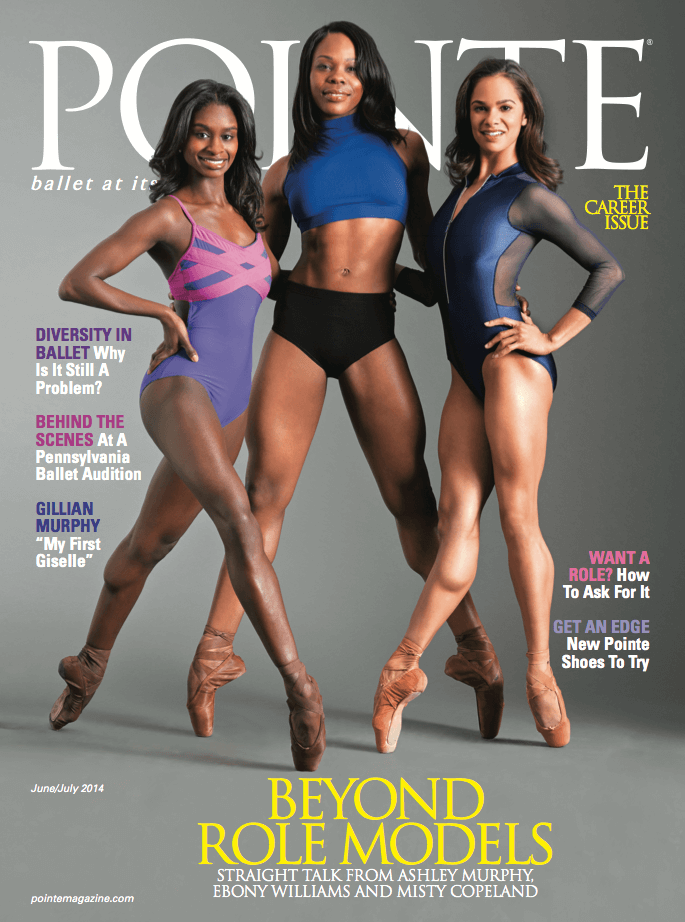I was very happy when I saw the cover of Pointe magazine’s June/July issue. It’s about time that talented ballerinas of color—ABT’s Misty Copeland, Dance Theatre of Harlem’s Ashley Murphy and Cedar Lake Contemporary Ballet’s Ebony Williams—get some time in the spotlight!
Pointe‘s current issue tackles the lack of diversity in ballet. For this, I applaud them. I have a hard time being critical of the art that brings me so much joy, both as a dancer and a spectator. But I do think ballet’s lack of diversity is a real problem, and one that needs to be addressed.
I touched upon this issue before, in my post about Dance Theatre of Harlem. I still find it hard to believe that now, in 2014, there are no black principal female dancers at any of the country’s major ballet companies—and very few Asians, Hispanics, Indians or other minorities in the upper ranks. Though I’m way past the age of pursuing ballet as a career, I feel a bit disheartened when I sit through entire ballet programs without seeing a single dancer who looks like me. So I can only imagine how talented, young, minority dancers must feel when they try to decide if they could ever succeed in the ballet world.
In addition, the lack of diversity makes ballet seem like it’s stuck in a bygone era.
Pointe‘s three cover ladies discuss the difficulties they faced, as up-and-coming ballet dancers of color. Murphy noted that one of the reasons she never considered ballet, as a career, is that while growing up, she never saw ballerinas who looked like her. Williams recounts an incident when she was a scholarship student at Boston Ballet: A dance mom pulled her aside, told her she was paying for her to be there and was undeserving of the roles she received. And Copeland describes the isolation she felt being one of the few black ballet dancers at ABT. (It should be noted that Alicia Graf Mack wrote the cover story. She, herself, is a classically trained ballet dancer who was turned down by both ABT and NYCB. She dances with Ailey, and continues to be a standout among a company of fantastic dancers.)
The magazine also has a timeline of diversity in ballet. (There are very few milestones.) A longer piece addresses what companies are doing to become more diverse. ABT’s new Project PliГ©, for example, grants scholarships to talented dancers, teachers and arts administrators of color; works with other ballet companies on outreach; and has a partnership with the Boys & Girls Clubs of America to identify minority children with ballet potential.
It’s a start. Hopefully we’ll see some changes soon.
(Image via Pointe )
